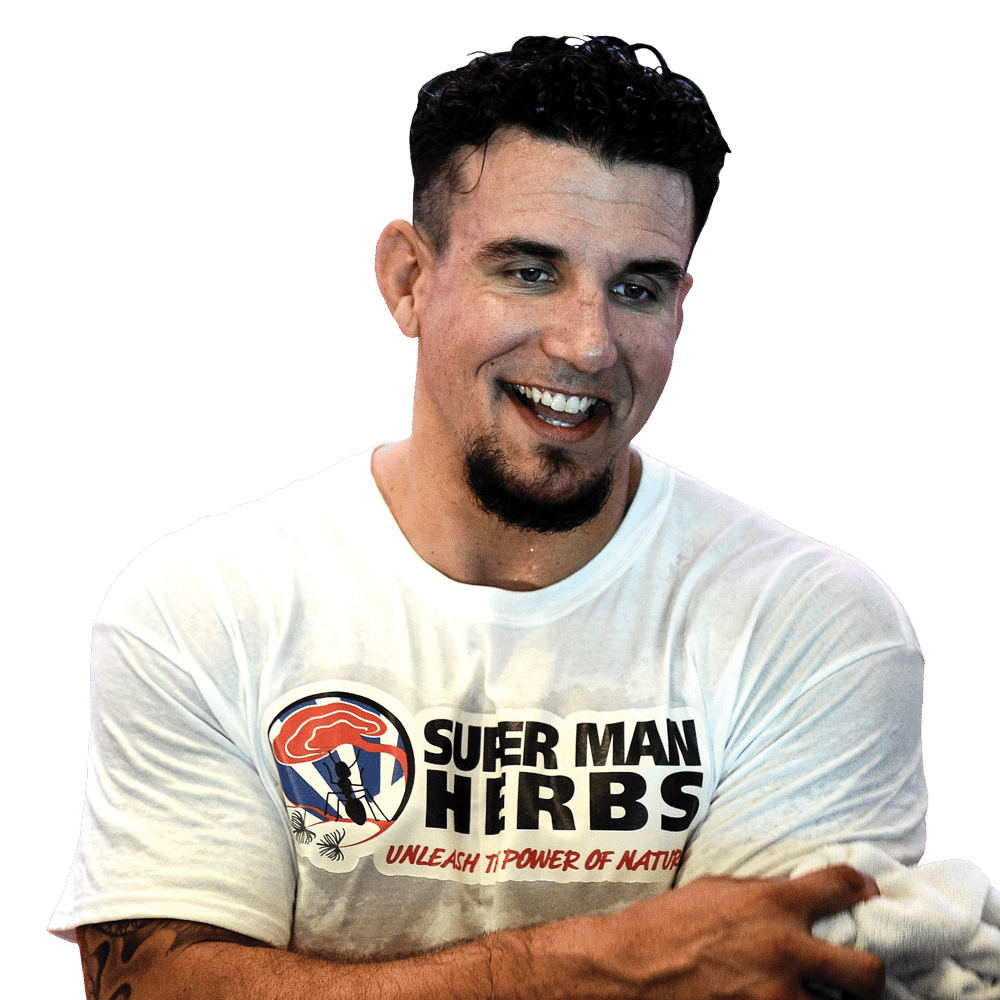
Issue 128
May 2015
Former UFC heavyweight champ Frank Mir talks returns with Brock and ‘Big Nog’, popping painkillers and submitting to soccer moms
You snapped a four-fight losing streak when you KO’d ‘Bigfoot’ Silva in February. Do you feel like this is act three in the career of Frank Mir?
“Absolutely. Once again my back was against the wall. It was almost like I had to make a choice to cash in my chips or come back, make a rebound and turn it around, which is what I did.”
You’ve mentioned both Brock Lesnar and Antonio Rodrigo Nogueira since your victory in Brazil. Why are you chasing trilogy fights?
“I have a lot of respect for Nogueira, and I’ve always extended him that respect. He’s a phenomenal warrior. He’s a guy I used to mimic and watch when I was young to learn how to be a martial artist when he was in Pride. If he only has one fight left and he wants to retire by facing me in Brazil, I’d be more than happy to give him that.”
What about Brock?
“If Brock Lesnar decides to come back, I’ll roll out the welcome mat for him. I don’t think he likes getting punched very much though, and I’m looking like I’m actually figuring out how to punch pretty hard. But a rubber match between us would be a phenomenal fight.”
After achieving so much in your career already, how do you stay motivated, especially after losing four fights consecutively?
“I’m not necessarily trying to accomplish anything. I love living a martial-arts lifestyle. I grew up watching Bruce Lee movies. I grew up watching boxing matches, wrestling matches, judo matches, all forms of the martial arts. To be able to compete, to be able to push myself, to learn more and just enjoy the martial arts life, is why I continued. I don’t want a nine-to-five job.”

Do you have an answer now as to why the losing streak occurred?
“My body was just too beat up. It really hit me, after the (Alistair) Overeem loss. I went to a yoga class with my wife. I was thinking I was pretty flexible, but 10 minutes into the class I quit. I wasn’t able to do the positions.
“I had too much pain in my arms, my shoulders, my wrists. I was curled up in a ball on the mat. I’m like, ‘Wait a minute, why am I struggling?’ This was a class with a bunch of soccer moms and I’m supposed to be this elite professional athlete and I can’t do a downward dog for more than a few seconds without my arms quivering and shaking.”
You completely overhauled your training setup again for the Bigfoot fight, but what do you know now that you never knew 10 years ago?
“You just can’t train every day full blast. Guys at the highest levels of other sports don’t train that way. If you look at martial arts and everybody in MMA especially, we do train that way. Guys train two, three, four times a day. Part of that is the fact fighters want to prove how tough they are. It’s one thing to work through a tight hamstring or something but not to work through a legitimate injury. I did it myself. I probably single handedly kept the Aleve brand in business. I popped five Aleve first thing every morning. The signs were there, I just didn’t recognize them.”

Is this what lead to you requiring testosterone replacement therapy (TRT)?
“I went to the doctor and he said my hormone levels were shot. And that’s where the hormone therapy came into play. Dude, I’m in my 30s. Why are my hormones that of a 60-year-old man? That makes no sense. I train, I eat right but I trained wrong. If you train that hard every single day it just breaks you down. That’s overtraining. My cortisol levels were completely shot. I was dealing with adrenal fatigue. I was killing myself six days a week in the gym. And simply eating right wasn’t enough to overcome that level of damage on my body.”
Do you have any advice for young fighters in MMA today?
“Just to think about their career and health long term. I was able to get away with it too, in my early and mid-20s. Basically, I’d go have a hard training session in the morning, break for lunch and be back in the gym at 1pm to do weights and conditioning. Then break for an hour and walk straight into a hard session in the afternoon. But it’s not smart to do that to yourself. You’re not going to get better training like that.
“Now I’m a product of that kind of training. Being a professional fighter for 14 years, it all caught up to me. Had I trained more intelligently early in my career in terms of going hard just once or twice a week, or simply having a five or six-hour break between sessions, then who knows what I may have achieved or where I would be now. Unfortunately, I’ve probably learned this a little late in my career. But rest is the most important aspect of any workout.”
...









